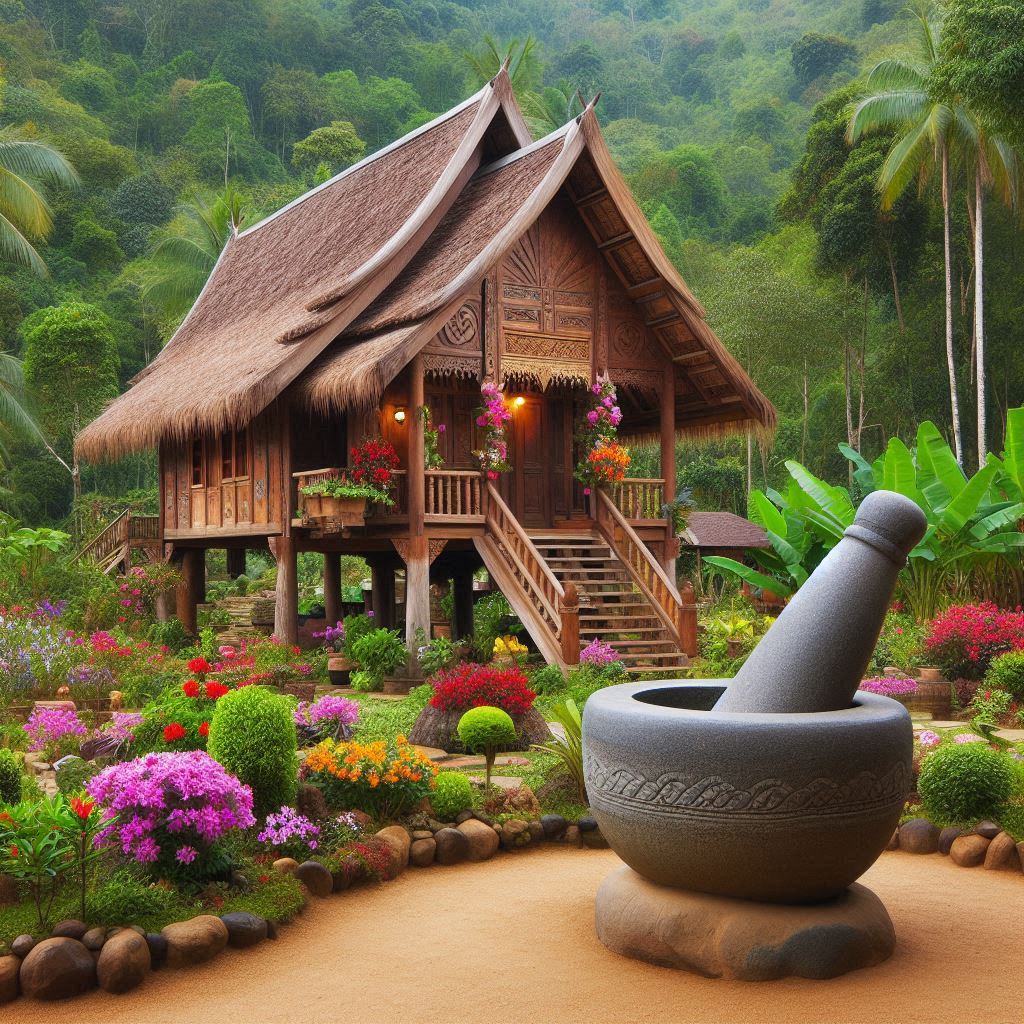In the heart of our beloved Laos, where the rivers sing and the mountains whisper ancient tales, lies a treasure trove of history and culture. Among the many treasures that adorn our land, none holds as much significance as the humble mortar—a timeless tool that has shaped our culinary traditions and cultural practices for generations.
Ancient Beginnings
The story of mortars in Laos traces back to the dawn of time, woven into the fabric of our ancient heritage. In the days of old, our ancestors crafted mortars from stone or wood, using their skilled hands to fashion sturdy vessels for grinding grains, spices, and herbs. These early mortars were the cornerstone of our kitchens, enabling us to prepare nourishing meals and healing remedies with care and precision.
Culinary Delights
As our culinary traditions blossomed over the centuries, so too did the role of mortars in our kitchens. They became indispensable companions in the art of Lao cooking, lending their strength to the preparation of iconic dishes like "tam mak hoong" and "larb." With each pound and grind, the flavors and aromas of our ingredients mingled, creating culinary masterpieces that delighted the senses and nourished the soul.
Cultural Reverence
Beyond their practical use, mortars hold a special place in our hearts as symbols of tradition and cultural heritage. Passed down from generation to generation, they are cherished heirlooms that connect us to our ancestors and the wisdom of the past. In our homes and temples, mortars play a central role in rituals and ceremonies, offering prayers and blessings in the form of ground spices and offerings.
Artisanal Craftsmanship
The craftsmanship of mortars is a testament to the skill and artistry of Laotian artisans. Carved from stone, wood, or clay, each mortar is a unique work of art, bearing the marks of its maker and the spirit of our land. With each stroke of the chisel and each polish of the surface, artisans breathe life into these humble vessels, infusing them with the beauty and soul of Laos.
Preserving Tradition
While the world around us changes, the tradition of using mortars in Laos remains steadfast. In recent years, there has been a resurgence of interest in traditional cooking methods and culinary practices, leading to a revival of mortar use in kitchens across the country. This revival honors the legacy of our ancestors and celebrates the rich tapestry of flavors and traditions that define Lao cuisine.
Conclusion: Embracing Our Heritage
As we reflect on the story of mortars in Laos, we are reminded of the enduring spirit of our people and the richness of our cultural heritage. From ancient beginnings to modern-day revival, mortars have been an integral part of our lives, shaping our cuisine, our culture, and our identity as Laotians. Today, as we honor the past and embrace the future, let us continue to celebrate the beauty and significance of mortars—a symbol of our heritage, our resilience, and the timeless spirit of Laos.

